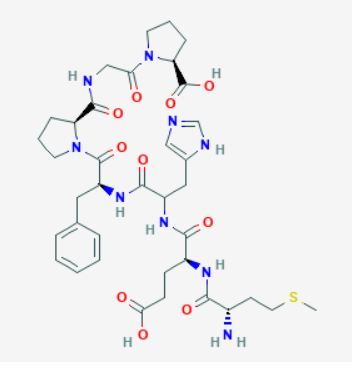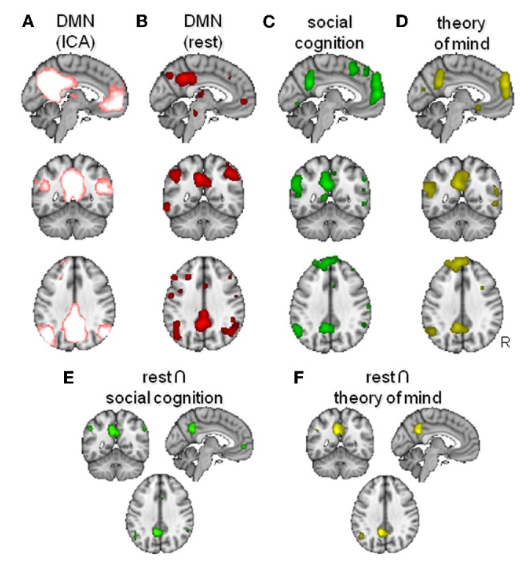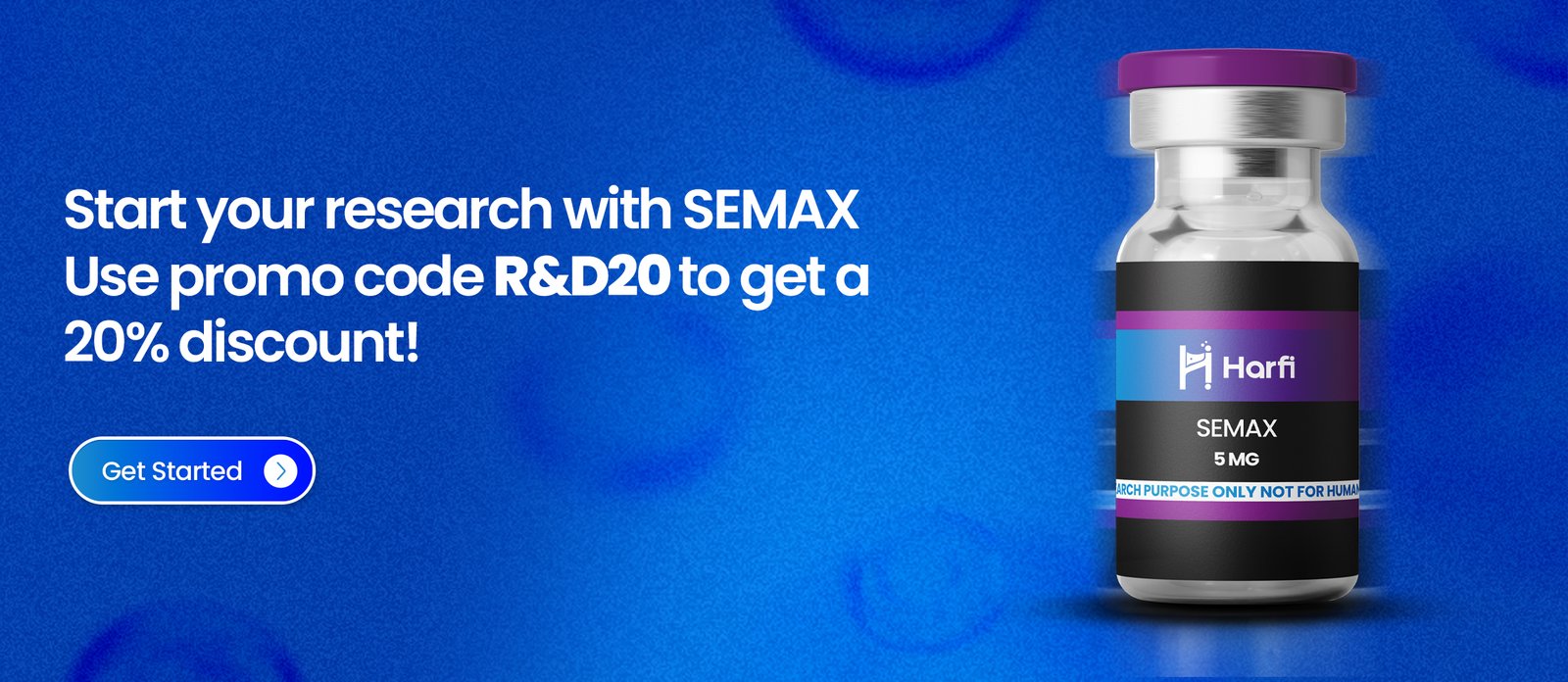Semax
Semax is a synthetic peptide derived from adrenocorticotropic hormone (ACTH) that possesses neuroprotective and nootropic properties. It is recognized for its ability to enhance cognitive function, alleviate anxiety, and promote neuroplasticity. Research has explored its potential applications in treating stroke, ADHD, and neurodegenerative disorders.
Product Usage
This product is intended for research purposes only. It is strictly designated for in vitro testing and laboratory experimentation. All information provided on this website is for educational purposes only. Any introduction into humans or animals is strictly prohibited by law. Only licensed, qualified professionals should handle this product. It is not a drug, food, or cosmetic and must not be misbranded, misused, or mislabeled as such.
Introduction
Semax, a synthetic analog of adrenocorticotropic hormone (ACTH), has gained interest for its potential health benefits. Research suggests it may support immune function, protect neurons, and promote cardiovascular health. Additionally, it shows potential in pain management and blood clot regulation.
Structure
Sequence:Met-Glu-His-Phe-Pro-Gly-Pro
Molecular Formula: C37H51N9O10
Molecular Weigh: 813.87 g/mol
Synonyms: Semax, ACTH (4-10) analog

Research on Semax
Semax and Its Influence on Resting Brain Activity
Functional magnetic resonance imaging (fMRI) studies indicate that Semax significantly impacts the default mode network (DMN). The DMN consists of brain regions that remain more active during rest than during task engagement. While its full function is still being explored, research suggests it plays a role in social cognition and environmental awareness. This network helps individuals transition from a resting state to focused attention, particularly in social contexts. Cognitive disorders, such as Alzheimer’s disease, often disrupt the DMN, highlighting its importance in social perception.
Semax enhances DMN activity, leading to greater alertness and improved environmental awareness, especially in social settings. This heightened awareness may contribute to better focus and attention. Additionally, increased DMN activity is generally linked to stronger connectivity between different brain regions, which supports problem-solving, memory retention, and creativity. While direct evidence is lacking, it is possible that Semax enhances brain connectivity, thereby improving cognitive function.
Semax in Stroke Recovery
Semax is used in Russia to treat acute cerebral hypoxia, including stroke and traumatic brain injury. Studies on rats reveal that Semax stimulates key molecular pathways involved in gene expression within the central nervous system (CNS). Specifically, it influences 24 genes associated with blood vessel function in the brain and spinal cord, regulating smooth muscle migration, red blood cell production, and new blood vessel formation. These effects may contribute to Semax’s neuroprotective properties, promoting neuronal survival, stabilizing mitochondria, and enhancing nutrient delivery to the brain.
Clinical research in Russia suggests that stroke patients receiving Semax during rehabilitation experience faster recovery and improved overall function. This may be due to increased levels of brain-derived neurotrophic factor (BDNF), a peptide linked to learning and memory. By stimulating BDNF, Semax enhances neuroplasticity, helping undamaged brain regions take over functions previously managed by damaged areas. Additionally, its activation of the DMN may further support cognitive recovery and social functioning.
Semax and Gene Expression in the Brain
Beyond stroke treatment, Semax influences gene expression in healthy individuals. Studies in rats show that a single intranasal dose can alter gene activity in the hippocampus and frontal cortex within 20 minutes. The hippocampus is essential for memory and learning, while the frontal cortex plays a role in concentration, planning, and information organization. Semax particularly affects nerve growth factor (NGF) and BDNF, suggesting it may enhance cognitive processing and learning abilities.
Semax and Cognitive Enhancement
Semax has shown potential for improving learning and memory, particularly in individuals with neurological impairments. Research from Canada, the United States, and China suggests that adrenocorticotropic hormone (ACTH), from which Semax is derived, protects cognitive function in mouse models of epilepsy. ACTH has been used to treat epileptic disorders to prevent developmental delays and cognitive decline.
As an ACTH derivative, Semax may offer enhanced benefits. While further studies are needed, early findings suggest that even low doses of ACTH can protect against memory and learning deficits during seizures. This indicates that both ACTH and Semax may have nootropic properties, potentially enhancing cognitive performance beyond therapeutic applications.
Semax and Depression
Studies in mice indicate that increasing BDNF levels can help regulate brain function in cases of depression. Conventional antidepressants, such as selective serotonin reuptake inhibitors (SSRIs), primarily affect serotonin signaling, but their full therapeutic effects often take weeks to manifest. This delay has long puzzled researchers. Findings suggest that SSRIs may require time to work because their efficacy is linked to their ability to boost BDNF levels and promote neurogenesis.
Since Semax also stimulates BDNF production, combining it with SSRIs could potentially enhance antidepressant effectiveness. However, more research is needed to validate these findings and determine the extent of Semax’s role in depression treatment.
Semax is known for its minimal side effects, excellent subcutaneous bioavailability in mice, and low oral bioavailability. However, dosages tested in mice do not directly translate to human use. Semax is available solely for research purposes and should not be used by individuals without appropriate licensing. If you intend to purchase Semax, ensure you are a licensed researcher.

DISCLAIMER: FOR INFORMATIONAL AND EDUCATIONAL PURPOSES ONLY
All articles and product details provided on this website are strictly for informational and educational purposes.
The product information presented here applies solely to in-vitro studies—experiments conducted outside of living organisms, such as in laboratory settings. These products are not classified as medicines or drugs and have not been approved by the FDA for the prevention, treatment, or cure of any medical conditions, ailments, or diseases.
Furthermore, the use of these products in humans or animals is strictly prohibited by law.

